
Try some of these out the next time you need to cool off.
Summer in Japan can be brutal. High temperatures combined with high humidity can make you not want to leave the confines of your air-conditioned apartment… for the next three months.
Luckily the Japanese people themselves have come up with some pretty ingenious (and sometimes hilarious) ways of staying cool in the summer. The techniques vary by region, and what may be perfectly normal in one prefecture may be off-the-wall crazy in another. The hotter a place tends to get in the summer, the crazier ideas its residents tend to use.
That’s why today we’re counting down the top five odd ways Japanese people beat the summer heat. Aside from the obvious — drinking mugicha (barley tea) and eating kakigōri (shaved ice) — what other ways might you see people in Japan avoiding the sun’s burning hugs?
So let’s get to it! Starting off with…
Honorable Mention: Covering up to the max
When I lived in Okinawa, one of the biggest culture shocks I had was seeing how much people covered up in the brutal, nearly-tropical summers. (And that’s saying something, considering some of the other culture shocks we’ve talked about before.)
I distinctly remember one time walking down the street and seeing someone walk toward me who looked like she was bundled up for a winter snowstorm. She had on a big floppy hat, sunglasses, scarf around her face, long-sleeved jacket, gloves, and long pants. It was one of the few times I felt like I might’ve been on another planet and not another country.
▼ And you better believe those gloves were
the kind that went all the way up to her shoulders.
While all this covering up may seem counterintuitive at first, it makes sense if you think about it. With such intense heat, it only takes a few minutes in the sun to get burned, and putting on sunblock can be sticky and uncomfortable, especially if you’re only going outside for a little while.
Of course this is only an honorable mention since the people covering up are only technically “staying cool” in the same way you’re technically “cooler” if you don’t have a sunburn than if you do. But add on the fact that pale white skin is seen as beautiful in Japanese society and you end up with people sometimes looking like this when they go outside in the summer:
▼ “Taking precautions against the sun
made me end up looking like a farmer.”
▼ “Going full-on sun protection this year. Last year too, I went to work like this every day. I look like an old woman or criminal, but I can deal with it.”
https://twitter.com/ayaputyo/status/863647741376839680#5. Body sheets
ハビナース さっとさわやか からだふき 60枚入 https://t.co/jngz5hNbqy pic.twitter.com/so1Hu9c95L
— 人気商品ナンバーワン!! (@ninki18) September 28, 2016
No matter how many precautions you take against the heat, eventually you’re going to sweat. And if you’re anything like me, that sweat doesn’t come in little droplets, but more like waterfalls of hot, liquid misery.
▼ Actual photo of me walking to work in the summer.
Every morning I arrived drenched after walking to work in Okinawa, and I would have to change into another set of fresh clothes. But even then, I couldn’t shake the uncomfortable hot feeling that would permeate the office all day as the sun tried to force itself through the windows and into our skin.
Thankfully one of my coworkers introduced me to “body sheets,” basically just moist wipes that you can rub on yourself when you’re feeling hot and sweaty to cool yourself down. I was skeptical at first, but pretty soon I was rubbing them on my arms, neck, face, and anywhere else I could reach, just like my coworkers.
▼ Actual photo of me using a refreshing body sheet.
While the wipes are great at cleaning sweat and giving you a brief respite, unfortunately their coolness doesn’t last very long. Just a few minutes after wiping, the heat starts to come back, and then you start craving another one. Before you know it you’ve spent all your summer salary on chasing after that sweet, sweet body sheets high.
▼ I may not have any more money…
but at least now I’ve freed up some pocket space for more body sheets!
#4. Parasols
I don’t know what it’s like in other countries, but in the U.S. I’ve never seen anyone use an umbrella aside from when it’s raining. In Japan though, sun parasols are almost as common as rain umbrellas, and on days when it’s really hot out, you can see them everywhere.
▼ No rain here, unless you count raining sunbeams of death!
日傘さしてる人多すぎて雨かと疑うレベル pic.twitter.com/yzTAhaBAZR
— ゆーちゃん@プロ🚑 (@sekaowa_yuutyan) May 20, 2017
Usually it’s only women who use sun parasols, to keep their skin from being directly hit from the sun and getting tan (it’s a lot easier than doing the full cover up we saw before). But when I lived in Okinawa, and on days when the sun was especially intense, I had no scruples about breaking out the parasol to try and get any amount of relief from the oppressive sun rays.
▼ And as this guy shows, it’s perfectly possible to look
like a badass dude while holding a parasol.
男が日傘ってそんなジロジロ見る?? pic.twitter.com/gfSCBpuvAr
— マグまぐ (@gagaga0888) April 24, 2017
#3. Ice pillows
アイスノン最高!
— 鈴木キューリ (@kyu_suzuki) July 25, 2015
部屋の温度31度でも寝られる。
カバー付きのピローよりこちらのソフトの方が効きます。
それ以前に精神的肉体的に限界で疲れ果てて起きれないだけなのかも。 pic.twitter.com/ZHbuaweEj9
Ice pillows may sound like something you’d get at a Hokkaido ice hotel, but when summer comes around in Japan, you can pick them up at must drugstores. They’re perfect for people who either don’t have air conditioning in their home, or people too cheap to turn theirs on
▼ I can do it… I can sleep without the AC.
I just need another cup of shaved ice and body wipes….
The ice pillow is basically exactly what it sounds like. It’s an ice pack that slides inside a pillow, keeping your head nice and cool as you try to get to sleep. Cold heads tend to produce more melatonin (the hormone that regulates sleep), so it might be something to try if you’re tossing and turning on those sweaty summer nights.
There are a variety of different ice pillows, but most of them follow the same pattern: an ice pack you drop into the freezer in the morning and pick up at night, and something slightly more soft and nice to insert it into to actually lay your head on.
▼ This ice pillow aficionado puts a towel around the ice pack’s soft container,
preferring a cool soothing feeling to an outright igloo.
俺の夏枕アイスノンピロー
— マッシー@ (:3_ヽ)_ (@masshi20) August 9, 2016
ソフトとハードな保冷剤で別れててゴツゴツしないし半日くらい持続する[布団]ε:) pic.twitter.com/CyZZHVYG87
#5. “Green curtains”
今日は曇ってて涼しいから、今のうちにグリーンカーテン設置!!
— ムネムネ (@20100625masa) June 18, 2017
これで毎日自宅警備してるマサムネも快適に過ごせるかな? pic.twitter.com/qzzelDAVov
In Japan, air conditioners get a pretty bad rap. Up until recently, most air conditioners used CFCs (ozone-depleting chlorofluorocarbons) as their cooling agents, though they’ve largely been replaced by HCFCs (hydrochlorofluorocarbons) which do 95 percent less damage to the ozone.
Despite that though, Japan is always looking for the most “eco-friendly” ways to stay cool in the summer, and it’s hard to be more eco-friendly than with a “green curtain” — an outside curtain made of natural plants, usually goya (“bitter melon”).
▼ Goya may be a bit of an acquired taste,
but the coolness it provides certainly isn’t!
Goya are chosen over other plants because their vines and leaves grow quickly, fairly thickly, and most importantly, naturally climb as they grow, latching on to the green-curtain lattice and staying there.
Once fully grown, a green curtain, generally grown right outside a window, blocks direct sunlight coming into the room, reducing the temperature indoors by up to 30 degrees Fahrenheit (15 degrees Celsius). And even if a green curtain doesn’t go that far, it can still reduce the temperature by a couple degrees, thus making the air conditioner work less and save energy.
▼ Ahhh, I’m feeling cooler just looking at it.
https://twitter.com/tklovesoccer/status/756762157782487040Green curtains are most popular in goya’s native Okinawa, where the summer heat is oppressive, but it’s a trend that’s started to spread to the rest of Japan too. It may seem a little strange at first, but you get to save money on energy, help the environment, and even have some fresh goya to cook when it’s grown.
▼ And you can use them to make goya chanpuru, Okinawan stir fry
made with goya, egg, SPAM… and basically anything else you want!
学食でゴーヤチャンプルーが食べれるなんて🌺🌺🌺 pic.twitter.com/bfmA10fx7f
— まんchan@湘南SHINKER/AID (@jetboy_hy29) June 21, 2017
And the #1 odd way Japanese people beat the summer heat is…
.
.
.
.
.
.
.
.
.
.
1.The Okinawa yaki-imo (baked sweet potato) truck
そういえば沖縄の最高気温は28℃ぐらいでしたが、まだ焼き芋屋さんが出てました。 pic.twitter.com/8bBS0ZWTyp
— インナービジョン(水谷) (@innavi_takmiz) April 6, 2015
The yaki-imo truck is exactly what it sounds like: a truck that slowly drives around the neighborhood selling hot baked sweet potatoes cooked right in the back, all the while blaring their hypnotic song to entice customers.
While yaki-imo trucks are a thing in the rest of Japan, they’re usually associated with fall/winter, which makes sense — a nice hot food when it’s starting to get chilly out.
But in Okinawa (the land of green curtains!), the yaki-imo trucks are at their peak during the last time of the year you’d expect: summer.
▼ Here’s a video of an Okinawan yaki-imo truck, constantly repeating its song:
“stone-baked sweet potatooooes, stone-baked sweeeeet potatoes!”
When I first encountered the hot potato truck in Okinawa, I was kind of at a loss for words. Why on Earth would someone want to buy a hot potato from a truck in the middle of the sweltering summer?!
I asked my friends in Okinawa, and they always told me the same thing: eating the potato makes them feel cooler. Some of them say the hot potato makes them sweat which cools them off, some of them say they feel cooler after they eat it (presumably because they’re not eating a hot potato anymore!), and some of them just said the sweet potato flavor cooled off their insides.
To be fair, it kind of makes sense. Even though the baked potato didn’t really work as a cooling method for me when I personally tried it, I can see how it’s a “summer” food for them. It’s kind of like how grilled hot dogs, hamburgers, and corn aren’t exactly the coolest foods in the world either, but we still associate them with summer and want to eat them then.
▼ Which helps make video titles like this make a lot more sense: “It’s summer,
so I cooked a hot potato in my yard.” You do you, buddy. You do you.
So there you have it, the top five odd way Japanese people beat the summer heat. Did we miss any of your favorite ways to stay cool in the summer in Japan? Let us know in the comments and hey, getting some cool airflow in the bathroom is yet another item to tag onto the list of the top five reasons Japanese squat toilets are awesome.
Top image: PAKUTASO (edited by SoraNews24)
W.T.F. Japan will be back next Thursday. In the meantime, say hi on Twitter and let me know if there’s any topics you’d like to see covered. See you next week!

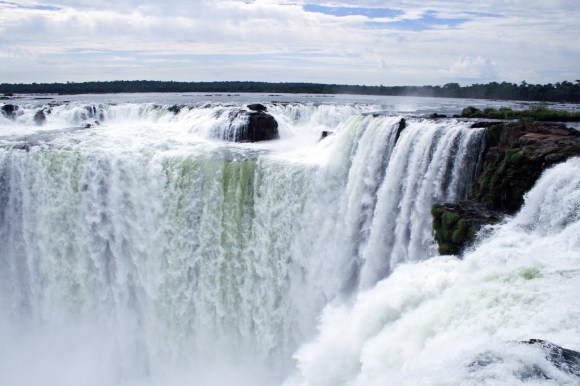


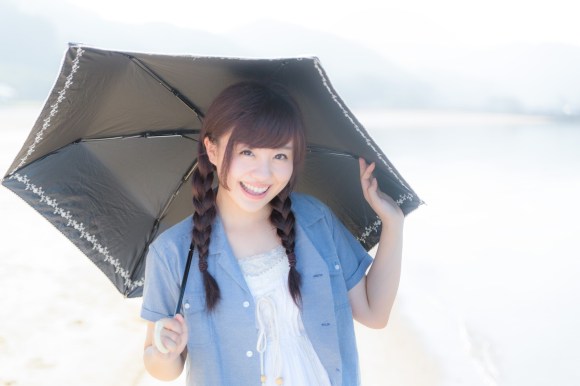
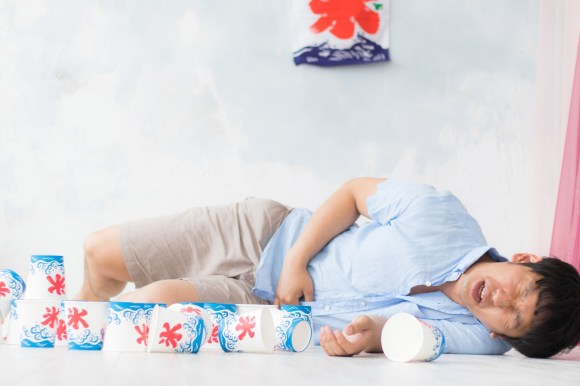
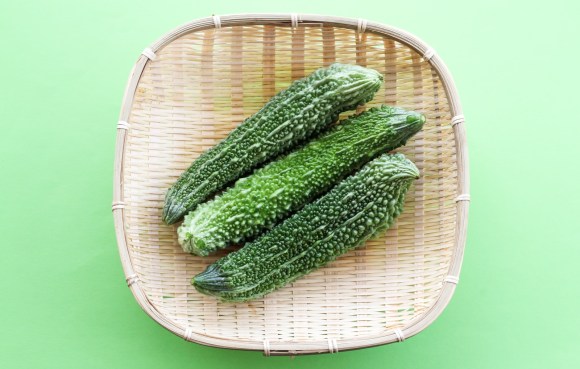
 W.T.F. Japan: Top 5 nicest sounds in Japan【Weird Top Five】
W.T.F. Japan: Top 5 nicest sounds in Japan【Weird Top Five】 W.T.F. Japan: Top 5 strange Japanese office occurrences【Weird Top Five】
W.T.F. Japan: Top 5 strange Japanese office occurrences【Weird Top Five】 W.T.F. Japan: Top 5 strangest ways to be polite in Japan 【Weird Top Five】
W.T.F. Japan: Top 5 strangest ways to be polite in Japan 【Weird Top Five】 W.T.F. Japan: Top 5 biggest Japanese food challenges【Weird Top Five】
W.T.F. Japan: Top 5 biggest Japanese food challenges【Weird Top Five】 W.T.F. Japan: Top 5 best Tamagotchi releases 【Weird Top Five】
W.T.F. Japan: Top 5 best Tamagotchi releases 【Weird Top Five】 Top Japanese cosplayer Enako returns to Comiket after 6 years, creates mayhem with admirers
Top Japanese cosplayer Enako returns to Comiket after 6 years, creates mayhem with admirers Private booths are coming to Japan’s Shinkansen bullet trains even sooner than we’d thought【Video】
Private booths are coming to Japan’s Shinkansen bullet trains even sooner than we’d thought【Video】 What makes a good boss in Japan? Workers sound off in survey
What makes a good boss in Japan? Workers sound off in survey Stamina-destroying “Paralysis Noodles” are Tokyo’s newest over-the-top ramen innovation
Stamina-destroying “Paralysis Noodles” are Tokyo’s newest over-the-top ramen innovation A surprising number of Japanese youth get most of their income from their parents
A surprising number of Japanese youth get most of their income from their parents Bear attack shelters going on sale in Japan as country experiences record-high number of incidents
Bear attack shelters going on sale in Japan as country experiences record-high number of incidents Japan’s otoshidama tradition of giving kids money at New Year’s gets a social welfare upgrade
Japan’s otoshidama tradition of giving kids money at New Year’s gets a social welfare upgrade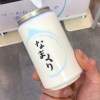 Weird Japanese vending machine find of the day: Cream in cans?
Weird Japanese vending machine find of the day: Cream in cans? One in four surveyed Japanese workers admits to wanting to kill boss, Osaka quake helps show why
One in four surveyed Japanese workers admits to wanting to kill boss, Osaka quake helps show why Japanese department store rooftop is a secret oasis where you can escape the crowds in Tokyo
Japanese department store rooftop is a secret oasis where you can escape the crowds in Tokyo Starbucks Japan ready to get Year of the Horse started with adorable drinkware and plushies【Pics】
Starbucks Japan ready to get Year of the Horse started with adorable drinkware and plushies【Pics】 Japanese beef bowl chain Sukiya’s 2026 Smile Box lucky bag basically pays for itself
Japanese beef bowl chain Sukiya’s 2026 Smile Box lucky bag basically pays for itself Hayao Miyazaki says Happy New Year to Studio Ghibli fans with new art for Year of the Horse
Hayao Miyazaki says Happy New Year to Studio Ghibli fans with new art for Year of the Horse Cup Noodle tries an authentic Jiro-style ramen, but something’s not quite right
Cup Noodle tries an authentic Jiro-style ramen, but something’s not quite right The best Starbucks Japan Frappuccinos we want to drink again in 2026
The best Starbucks Japan Frappuccinos we want to drink again in 2026 We revisited Sweets Paradise after a decade to see if Japan’s dessert buffet still delivers
We revisited Sweets Paradise after a decade to see if Japan’s dessert buffet still delivers That time Seiji called JASRAC to ask why he didn’t get paid royalties for his song being on TV
That time Seiji called JASRAC to ask why he didn’t get paid royalties for his song being on TV We found possibly the quietest Japanese-style hotel in Tokyo’s bustling Shinjuku district
We found possibly the quietest Japanese-style hotel in Tokyo’s bustling Shinjuku district Pizza Hut Japan’s hot lucky bags are perfect for a New Year’s pizza party
Pizza Hut Japan’s hot lucky bags are perfect for a New Year’s pizza party Japan’s oldest largetooth sawfish in captivity back on display in Mie Prefecture
Japan’s oldest largetooth sawfish in captivity back on display in Mie Prefecture 7-Eleven Japan starts new temporary luggage storage service in over 300 branches
7-Eleven Japan starts new temporary luggage storage service in over 300 branches Disillusionment at Tsukiji’s tourist-target prices led us to a great ramen restaurant in Tokyo
Disillusionment at Tsukiji’s tourist-target prices led us to a great ramen restaurant in Tokyo Starbucks teams up with 166-year-old Kyoto doll maker for Year of the Horse decorations【Photos】
Starbucks teams up with 166-year-old Kyoto doll maker for Year of the Horse decorations【Photos】 Tokyo considering law requiring more trash cans following litter increase in heavily touristed area
Tokyo considering law requiring more trash cans following litter increase in heavily touristed area Tokyo’s Tsukiji sushi neighborhood asks tour groups to stay away for the rest of the month
Tokyo’s Tsukiji sushi neighborhood asks tour groups to stay away for the rest of the month Tokyo event lets you travel back in time, for free, to celebrate 100 years since Showa era start
Tokyo event lets you travel back in time, for free, to celebrate 100 years since Showa era start Japan may add Japanese language proficiency, lifestyle classes to permanent foreign resident requirements
Japan may add Japanese language proficiency, lifestyle classes to permanent foreign resident requirements Sanrio theme park in Japan announces plans to expand into a Sanrio resort
Sanrio theme park in Japan announces plans to expand into a Sanrio resort Survey asks foreign tourists what bothered them in Japan, more than half gave same answer
Survey asks foreign tourists what bothered them in Japan, more than half gave same answer Japan’s human washing machines will go on sale to general public, demos to be held in Tokyo
Japan’s human washing machines will go on sale to general public, demos to be held in Tokyo Japan’s deadliest food claims more victims, but why do people keep eating it for New Year’s?
Japan’s deadliest food claims more victims, but why do people keep eating it for New Year’s? We deeply regret going into this tunnel on our walk in the mountains of Japan
We deeply regret going into this tunnel on our walk in the mountains of Japan Studio Ghibli releases Kodama forest spirits from Princess Mononoke to light up your home
Studio Ghibli releases Kodama forest spirits from Princess Mononoke to light up your home Major Japanese hotel chain says reservations via overseas booking sites may not be valid
Major Japanese hotel chain says reservations via overseas booking sites may not be valid Put sesame oil in your coffee? Japanese maker says it’s the best way to start your day【Taste test】
Put sesame oil in your coffee? Japanese maker says it’s the best way to start your day【Taste test】 No more using real katana for tourism activities, Japan’s National Police Agency says
No more using real katana for tourism activities, Japan’s National Police Agency says Starbucks Japan reveals new sakura drinkware collection, inspired by evening cherry blossoms
Starbucks Japan reveals new sakura drinkware collection, inspired by evening cherry blossoms Updated cherry blossom forecast shows extra-long sakura season for Japan this year
Updated cherry blossom forecast shows extra-long sakura season for Japan this year W.T.F. Japan: Top 5 most annoying sounds in Japan 【Weird Top Five】
W.T.F. Japan: Top 5 most annoying sounds in Japan 【Weird Top Five】 W.T.F. Japan: Top 5 most insane kanji place names in Japan【Weird Top Five】
W.T.F. Japan: Top 5 most insane kanji place names in Japan【Weird Top Five】 W.T.F. Japan: Top 5 “shikata ga nai” (“it can’t be helped”) situations in Japan【Weird Top Five】
W.T.F. Japan: Top 5 “shikata ga nai” (“it can’t be helped”) situations in Japan【Weird Top Five】 W.T.F. Japan: Top 5 strange things Japanese people do for Christmas【Weird Top Five】
W.T.F. Japan: Top 5 strange things Japanese people do for Christmas【Weird Top Five】 W.T.F. Japan: Top 5 offensive Japanese insults【Weird Top Five】
W.T.F. Japan: Top 5 offensive Japanese insults【Weird Top Five】 W.T.F. Japan: Top 5 hardest Japanese habits to break 【Weird Top Five】
W.T.F. Japan: Top 5 hardest Japanese habits to break 【Weird Top Five】 W.T.F. Japan: Top 5 confusing Japanese Internet slang words 【Weird Top Five】
W.T.F. Japan: Top 5 confusing Japanese Internet slang words 【Weird Top Five】 W.T.F. Japan: Top 5 kanji with the longest readings 【Weird Top Five】
W.T.F. Japan: Top 5 kanji with the longest readings 【Weird Top Five】 W.T.F. Japan: Top 5 kanji with ironic meanings【Weird Top Five】
W.T.F. Japan: Top 5 kanji with ironic meanings【Weird Top Five】 W.T.F. Japan: Top 5 creepiest Japanese insects 【Weird Top Five】
W.T.F. Japan: Top 5 creepiest Japanese insects 【Weird Top Five】 W.T.F. Japan: Top 5 hand gestures that Japanese people don’t understand【Weird Top Five】
W.T.F. Japan: Top 5 hand gestures that Japanese people don’t understand【Weird Top Five】 W.T.F. Japan: Top 5 creepiest Japanese animals 【Weird Top Five】
W.T.F. Japan: Top 5 creepiest Japanese animals 【Weird Top Five】 W.T.F. Japan: Top 5 Japanese foods for people who don’t like seafood 【Weird Top Five】
W.T.F. Japan: Top 5 Japanese foods for people who don’t like seafood 【Weird Top Five】 W.T.F. Japan: The top five “sora” references of all time! 【Weird Top Five】
W.T.F. Japan: The top five “sora” references of all time! 【Weird Top Five】 W.T.F. Japan: Top 5 craziest things about the Japanese medical system【Weird Top Five】
W.T.F. Japan: Top 5 craziest things about the Japanese medical system【Weird Top Five】
Leave a Reply